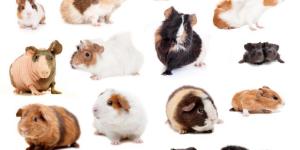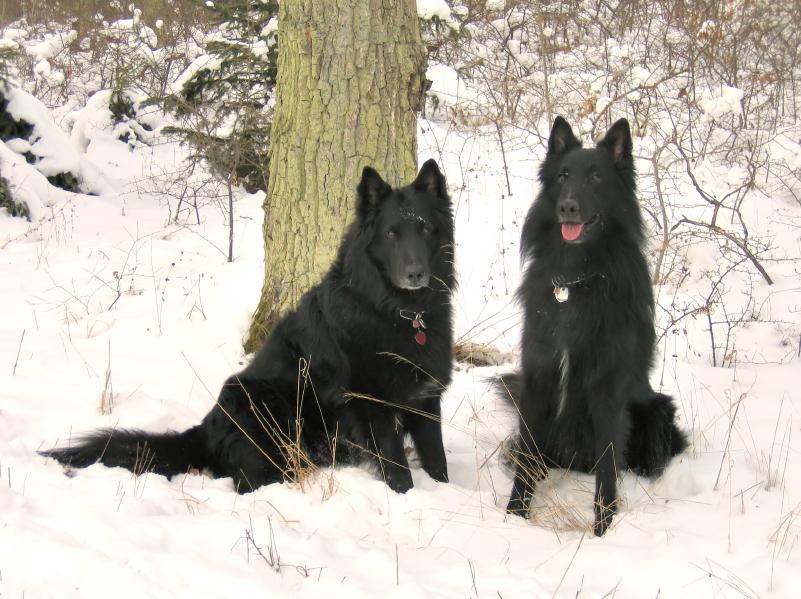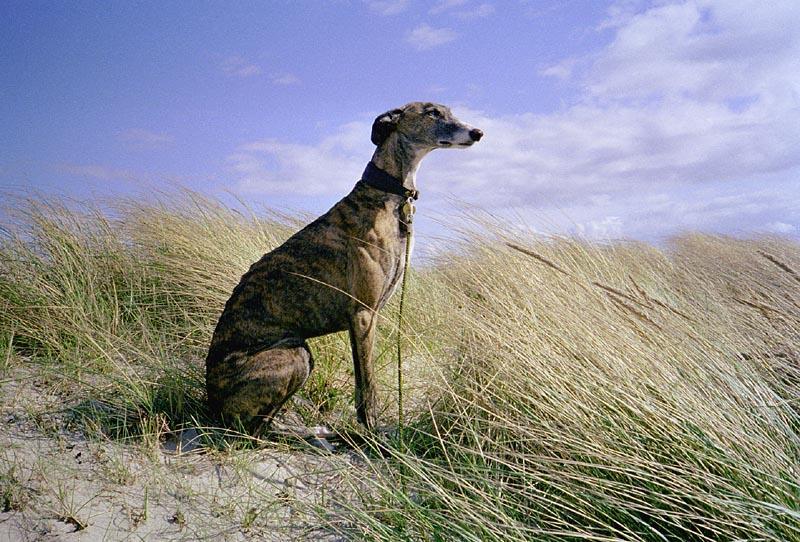How are Dogs Classified into Types and Groups?



See files for Dogs
While it is true that all dogs are equally great and worth loving, it is also true that not all dogs look alike. Chihuahuas and Alaskan Malamutes belong to the same species, but they look completely different. Like all species, dogs have evolved particular traits to adapt to their habitat and climate.
However, the wide variety of dog breeds is also a result of their close relationship with humans, who have bred dogs for different purposes. Dogs are classified into breeds, and these breeds are classified into types or groups according to size, shape, function and temperament. For instance, it makes sense that dogs bred to be companions are small and fluffy, while sledge dogs will be strongly built and have a thick double coat.
Since there are many ways to classify dogs, in this AnimalWised article we'll go over the different answers to the common question of how are dogs classified into types and groups. Read on!
How does the Fédération Cynologique Internationale (FCI) classify dogs into types?
The World Canine Organization, better known by its original name of Fédération Cynologique Internationale or FCI, was started in Europe back in 1911. This worldwide association recognizes 332 official dog breeds and classifies them into ten groups.
The 10 groups of the FCI assign numbers to each dog type, each section within the group and each breed. Therefore, each dog breed has a three-number identifier. While the FCI classification is useful because it's accepted all around the world, it mixes up criteria like a dog's appearance and its original function.
The FCI classifies dogs into the following types or groups:
- Sheepdogs and cattle dogs: Including different Bouviers and Collies, the German and Belgian Shepherds, and the Welsh Corgis, but not the Swiss Mountain Cattle dog.
- Pinscher, Schnauzer, Molossoid and Swiss Mountain dogs: Including the Boxer, the Bulldog, the Doberman, the Leonberger, all Mastiff breeds, the Newfoundland, and many others like the ones in the group name.
- Terriers: Including all Terrier dogs as well as the Jack Russell.
- Dachshunds: This group consists of a single section, where dachshunds are classified according to size and coat.
- Spitz and primitive types: We discuss Spitz-type dogs further below; they include Nordic and Asian dogs like the Akita Inu, the American Akita, the Alaskan Malamute, the Chow Chow, the different Elkhounds, the Hokkaido, the Icelandic Sheepdog, the Laika breeds, the Samoyed, the Shiba Inu, the Siberian Husky, and those ending in -hund.
The Primitive types include the Basenji, the Canaan Dog, the Mexican and Peruvian Hairless Dogs, the Pharaoh Hound and the Podencos. - Scenthounds and related breeds: Including the Bloodhound and the French Grands.
- Pointers and setters: Including the French Braques, the Griffons, the Hungarian Vizsla, some Spaniel types and the Weimaraner, as well as those with "Pointer" and "Setter" in their name.
- Retrievers, flushing dogs and water dogs: Including the different types of retriever dogs, some types of Spaniel and all water dogs.
- Companion and toy dogs: Including the different Bichons (see below), the Boston Terrier, the Chinese Crested, the Chihuahua, the French Bulldog, the Lhasa Apso, the Poodles, the Pug, the Shih Tzu, and some types of Spaniels, among other popular lapdogs.
- Sighthounds: Including the Afghan Hound, the Borzoi, the different Greyhounds, the Irish Wolfhound, the Saluki, the Scottish Deerhound and the Whippet.
In the picture you can see two Groenendael Belgian Shepherds, which according to the FCI in the first type, that of sheepdogs and cattle dogs.

How are dogs classified according to function?
Other associations and experts prefer to classify dogs according to their function or role in human society. Sometimes dogs with those functions are called "working" dogs, but the definition of "working" has different interpretations. Some companion dogs work, as they help in therapy, childcare and even acting.
Usually, working dogs are classified according to their original function, not their modern one. Dogs that were used to hunt, for instance, are now popular pets for apartments. Common dog types according to function include:
- Companion dogs: While many dog breeds have become companions, this label is usually reserved for toy dogs who were bred as lapdogs from the beginning. They include the different Bichons or small Spitz dogs like the Pomeranian, as well as designer cross-breeds.
- Guard dogs: Including mastiffs, mountain dogs, Pit Bulls or Schnauzers, among others. Dogs can guard livestock, humans or homes.
- Hunting dogs: Hunting dogs are further classified according to their role in a hunting party and even the type of ground or prey they excel at. Hunting dog breeds include "gun dogs" like Spaniels, Retrievers, Setters, Pointers and Water Dogs, as well as Dachshunds, the different types of hounds, and Terriers, who caught vermin in homes.
- Pastoral dogs: These versatile dogs can work as herders, but their function can overlap with that of guard dogs. Pastoral breeds include the different cattle dogs, Collies, Corgis and Shepherd dogs.
- Sledge dogs: Some dog breeds are used to pull sleds over the snow and ice in Arctic climates. These include Eskimo dogs, huskies, and other Spitz breeds.
Sadly, some dogs were originally bred to participate in dog fights. Characteristics like powerful jaws and short legs were selected, creating breeds like the Old English Bulldog, the Staffordshire Bull Terrier, the American Pit Bull Terrier and others. This horrifying origin story has made many people afraid of Pit Bulls and related breeds, but these are loyal, loving breeds who can perfectly be companion and guard dogs.
Some modern functions of dogs include being service dogs. These animals are trained to perform particular tasks for a disabled person so that they can have an easier life; they are trained for a specific purpose. Service dogs can have many different functions.
The most common purposes for service dogs include:
- Autism assistance dogs: Trained to ground someone with autism, especially a child, by physical contact.
- Diabetic alert dogs: Trained to warn someone of dangerous blood sugar levels.
- Hearing dogs: Trained to warn someone of sounds like particular words, bells or sirens.
- Medical alert dogs: Trained to alert of a particular body symptom.
- Medical assistance dogs: Trained to assist in difficult tasks.
- Mobility support dogs: Trained as a brace to balance someone with a physical disability. They are usually large dogs.
- Psychiatric service dogs: Trained to help someone with anxiety, depression or another psychiatric condition.
- Seizure alert dogs: Trained to assist following a seizure, including warning and fetching medication.
- Severe allergy alert dogs: Trained to identify dangerous allergens. These dogs often carry medication or instructions in their service vests.
- Visual assistance dogs: Trained to guide someone.
- Wheelchair assistance dogs: Trained to assist someone to open doors, fetch objects, etc.
Emotional support and therapy dogs aren't exactly the same as service dogs, as service dogs perform specific, physical tasks, and they're not regulated by the same standards. However, their function is similar. Remember that you should never pet a service dog, especially without asking, and that you mustn't ask the exact purpose or tasks they fulfill; the handler will tell you if they want.
Other breeds, known for their excellent sense of smell, alertness or resilience, make excellent police dogs.
The American Kennel Club also uses function in order to classify the different dog breeds into eight groups or types. Their classification is as follows:
- Hound group: Includes both sighthounds and scenthounds.
- Terrier group
- Working group: Includes both guard dogs and sledge dogs.
- Herding group: Includes all shepherd-like dogs.
- Sporting groups: Includes Pointers, Retrievers, Setters and Spaniels.
- Non-sporting group: Includes those who can't be classified convincingly into a single group.
- Toy group: Companion dogs or lapdogs.
- Miscellaneous class: Breeds that haven't been fully recognized and classified yet.
In the picture you can see a Spanish Greyhound, a hunting breed that the FCI classifies as group 10, sighthounds.

How are dogs classified according to phenotype or appearance?
- Bichon: These dogs are almost always companion dogs. They are characterized by their curly tails, dropping ears, big dark eyes and non-shedding hair. The best-known Bichon breeds include the Maltese and the Bichon Frise.
- Molosser: These dogs are quite big, solid, heavy and muscled; they are known for their floppy ears and short, wide muzzle. It is believed they originated in Eastern Europe or Western Asia. "Mastiffs" are the larger molossers: All mastiffs are molossers, but not all molossers are mastiffs. The best-known molosser breeds include the Boxer, the Bulldog, the Bullmastiff, the Bull Terrier, the Dogue, the Great Dane, the Leonberger, the Rottweiler and the Shar Pei, among others. Molossers are found among the 5 most wrinkly dog breeds.
- Spaniel: This type of dog originated in Western Europe, where they were bred as gun dogs. Spaniel breeds are mostly small or medium-sized, and they are known for their long drooping ears and soft, wavy fur. Here you can learn more about the different types of spaniel dogs.
- Spitz: It is thought that this wide type of dogs originated in Siberia. Spitz dog breeds are of very different sizes, but they tend to have long thick fur adapted for cold weather and pointy ears and face. Some of them have wary temperaments, which match their resemblance to wolves. The best-known Spitz breeds include the Akita Inu, the Alaskan Malamute, the Chow Chow, the different Elkhunds, the Finnish Spitz, the Laika breeds, the Pomeranian, the Siberian Husky and the Welsh Corgi.
- Toy or lap dog: The smallest dogs were almost always meant to be lapdogs or companion dogs, with some Terrier exceptions, whose small size allowed them to hunt rats or mice. The best-known toy dog breeds include the Bichons, the Chihuahua, the Papillon,
- the Pekingese, the Pomeranian, the Pug, the Shih Tzu, the King Charles Spaniel and the Yorkshire Terrier.
In the picture you can see a French Bulldog, a small molosser dog that is very popular as a companion. The FCI classifies them in group 9, companion or toy dogs, while the American Kennel club considers them group 7, non-sporting.

How else are dogs classified?
Some breeds have evolved differently than others because they lived in more remote areas and thus mixed less with other breeds. Consequently, these dogs are closely tied to their geographic location and are perfectly adapted to it, showing peculiar aspects and traits.
These isolated dog types include the East Asian Akita, Chow Chow, wild dingo and Shar Pei; the Middle Eastern Afghan Hound and Saluki; and the Nordic Alaskan Malamute and Siberian Husky.
In the picture you can see a Chow Chow, a Spitz breed that the FCI classifies as group 5 - Spitz and primitive types - and the American Kennel Club classifies as group 7 - non-sporting.

As you can see, there are many answers to how are dogs classified into types and groups. Depending on whose criteria you follow, you'll end up with one classification or the other.
Here you can learn more about how to identify a dog's breed. If you have any tips or elements to add, please tell us in the comments section!
If you want to read similar articles to How are Dogs Classified into Types and Groups?, we recommend you visit our Comparisons category.










